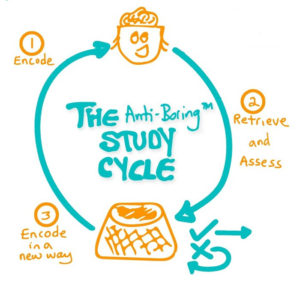Hey Y’all, I’ve got a very special video for you today. I strongly believe that every student, teacher, and parent out there should memorize what I call The Study Cycle. It needs to be a part of the daily language in classrooms and households. Normally I keep this video locked up in my paid online courses, but today I’m releasing it for you to watch for FREE!
Check out the video here. And then — if you’re a teacher, tutor, school administrator or academic coach, please considering joining me for my upcoming course The Art of Inspiring students to Study Strategically. We start on February 27th. You will learn everything you need to know to ensure that students have the tools they need to rock their learning with or without you!
Hey there, while I HIGHLY recommend watching this particular video in full, here is a summary:
The Study Cycle is composed of 3 steps and is the most effective, efficient, and anti-boring method I know for studying. So before we begin going over the steps, I have a little image here, which we will be referencing.
 We start with the basket of knowledge and skills at the bottom of the image, this is what we need to learn, and we need to get this into your beautiful brain at the top. So step 1 is encoding the information from the basket into our brains. In this step, we are getting the information into our brains, whether we are teaching it to ourselves or it’s being taught to us.
We start with the basket of knowledge and skills at the bottom of the image, this is what we need to learn, and we need to get this into your beautiful brain at the top. So step 1 is encoding the information from the basket into our brains. In this step, we are getting the information into our brains, whether we are teaching it to ourselves or it’s being taught to us.
Step 2 of The Study Cycle, which the majority of students skip, is practice retrieval. This is the process of getting the information out of our brains and assessing what we actually learned. By doing this, we get two very important pieces of information. The first is what we do know, what we actually did learn in step 1. The second is what we didn’t encode in step 1. What we didn’t learn, or encode, we put back into the basket of knowledge.
Then we have step 3. Step 3 is one of the least practiced steps, but just as important or more important than the other 2. Step 3 is to encode the information we assessed we didn’t learn in step 2 in a NEW way. The important thing is NOT just to try to re-encode it the same way you did in Step 1, but to encode the information in a new way.
My course, The Anti-Boring Approach to Powerful Studying, for students, and The Art of Inspiring Students to Study Strategically, for Educators, both are filled with a wide variety of tools to help students encode information in new ways. So check them out, and I look forward to hearing from you.
